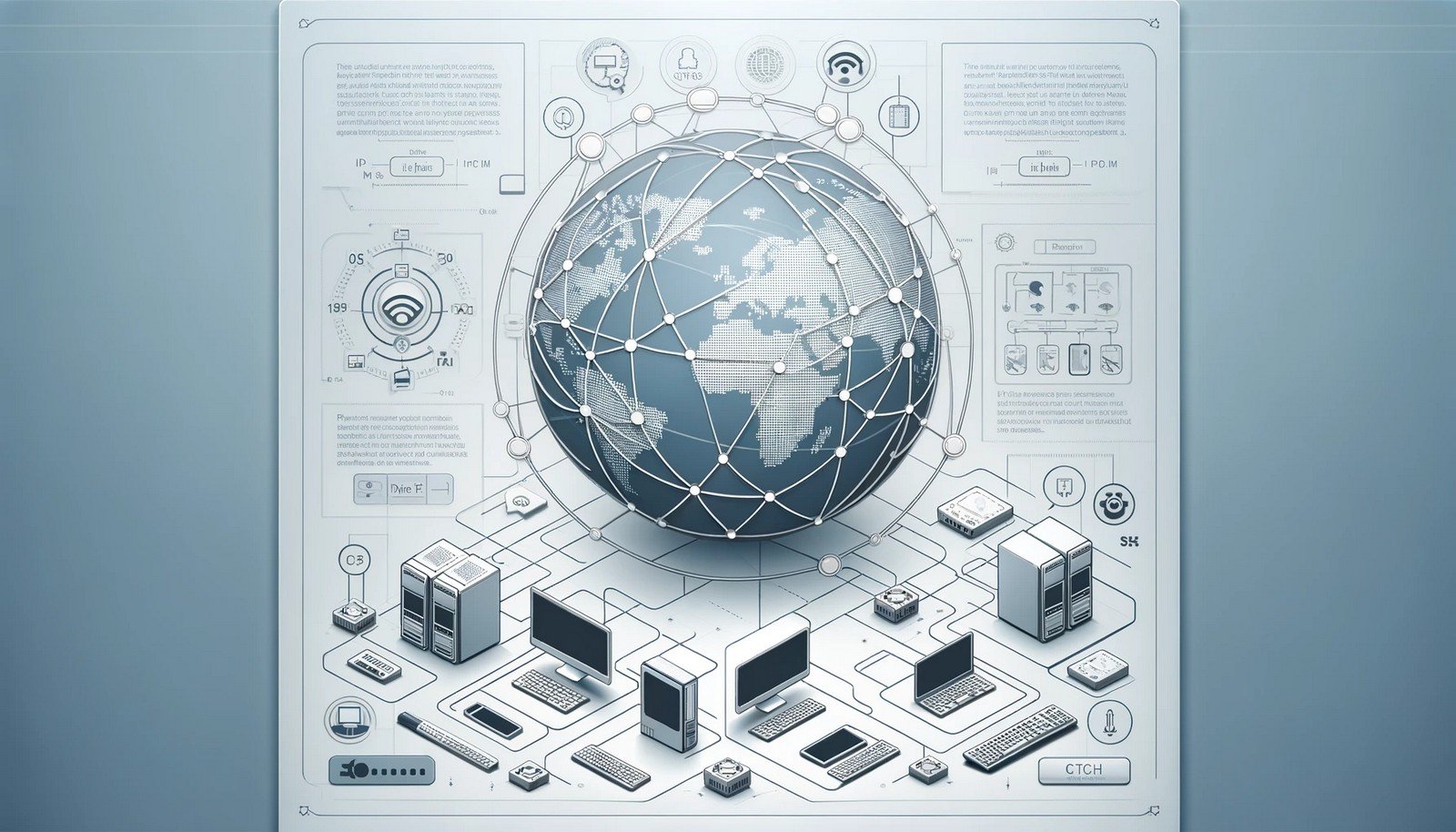IPv4
 (Representational Image | Source: Dall-E)
(Representational Image | Source: Dall-E)
Quick Navigation:
- IPv4 Definition
- IPv4 Explained Easy
- IPv4 Origin
- IPv4 Etymology
- IPv4 Usage Trends
- IPv4 Usage
- IPv4 Examples in Context
- IPv4 FAQ
- IPv4 Related Words
IPv4 Definition
IPv4 (Internet Protocol version 4) is the fourth version of the Internet Protocol (IP), responsible for identifying devices on a network through an addressing system. IPv4 uses a 32-bit address scheme allowing for over 4 billion unique addresses. It is the most widely used protocol for internet communication, enabling data to be sent across networks by breaking it into packets and ensuring each reaches the correct destination via unique IP addresses.
IPv4 Explained Easy
Think of IPv4 like a postal system for the internet. Just like every house has a unique address so that mail gets delivered correctly, every device connected to the internet has a unique IPv4 address. This helps computers and websites send and receive information without confusion.
IPv4 Origin
IPv4 was developed in the early 1980s as part of the ARPANET project, the precursor to the modern internet. It was designed to provide a standardized way for computers to communicate over networks. Over time, as internet usage grew exponentially, the limitations of IPv4 led to the development of its successor, IPv6.
IPv4 Etymology
The term “IPv4” originates from "Internet Protocol," a set of rules for data exchange, and "version 4," indicating it is the fourth version of this protocol.
IPv4 Usage Trends
IPv4 has been the backbone of the internet for decades, but its limited address space has led to a gradual transition toward IPv6. However, due to widespread infrastructure and compatibility issues, IPv4 continues to be extensively used, often with techniques like Network Address Translation (NAT) to extend its usability.
IPv4 Usage
- Formal/Technical Tagging:
- Networking
- Internet Protocols
- Data Transmission - Typical Collocations:
- "IPv4 address exhaustion"
- "IPv4 packet routing"
- "IPv4 vs. IPv6"
- "IPv4 subnetting"
IPv4 Examples in Context
- An IPv4 address, such as 192.168.1.1, is used to identify a router in a home network.
- Many websites still rely on IPv4 for accessibility due to its widespread adoption.
- Internet service providers use IPv4 alongside IPv6 to ensure compatibility with older devices.
IPv4 FAQ
- What is IPv4?
IPv4 is the fourth version of the Internet Protocol, responsible for assigning unique addresses to devices on a network. - How does IPv4 work?
IPv4 assigns a 32-bit address to each device, allowing them to send and receive data packets across networks. - Why is IPv4 being replaced by IPv6?
IPv4 has a limited number of addresses (approximately 4.3 billion), which are nearly exhausted, whereas IPv6 offers a much larger address space. - What is an IPv4 address?
An IPv4 address is a unique numerical label (e.g., 192.168.0.1) assigned to devices for network identification and communication. - What is IPv4 address exhaustion?
It refers to the depletion of available IPv4 addresses, leading to the need for alternative solutions like NAT and IPv6. - Can IPv4 and IPv6 work together?
Yes, dual-stack technology allows devices to use both IPv4 and IPv6 simultaneously for seamless internet connectivity. - What is subnetting in IPv4?
Subnetting divides a large network into smaller networks, improving efficiency and security. - How do NAT and IPv4 work together?
Network Address Translation (NAT) enables multiple devices to share a single IPv4 address, conserving address space. - Is IPv4 still in use today?
Yes, despite the adoption of IPv6, IPv4 remains widely used due to legacy systems and compatibility concerns. - What is the loopback address in IPv4?
The IPv4 loopback address (127.0.0.1) is used for testing and internal communication on a device.
IPv4 Related Words
- Categories/Topics:
- Internet Networking
- Addressing Systems
- TCP/IP Protocol Suite
Did you know?
Despite IPv4’s address exhaustion, creative solutions like NAT have prolonged its usability. Some large organizations and governments still hold significant unused IPv4 address blocks, which are sometimes sold for millions of dollars due to their scarcity.
PicDictionary.com is an online dictionary in pictures. If you have questions or suggestions, please reach out to us on WhatsApp or Twitter.Authors | Arjun Vishnu | @ArjunAndVishnu

I am Vishnu. I like AI, Linux, Single Board Computers, and Cloud Computing. I create the web & video content, and I also write for popular websites.
My younger brother, Arjun handles image & video editing. Together, we run a YouTube Channel that's focused on reviewing gadgets and explaining technology.



Comments powered by CComment